The Keeshond, pronounced KAYZ-hawnd, is a beautiful dog with a truly loving personality. Originally companions and guardians on barges in Holland, this breed is now almost exclusively a family pet, and their sweet and loyal nature makes them the perfect dog for the task.
This dog’s fluffy coat makes for an excellent extra layer of warmth on cold nights, and he wants nothing more than to be in the center of all the action. Their outgoing personality makes them open to strangers and other pets alike. You are sure to have a remarkable furry friend in this breed. Read on to learn more about the Keeshond.
Description of the Keeshond
The Keeshond can be picked immediately out of a crowd by its voluptuous coat and distinctive “spectacle” markings around the eyes. The dark glasses draw special attention to their intelligent and lively eyes.
These dogs are a type of spitz, and like other “spitzy” dogs, Keeshonden have long fox-like faces, pointed ears, thick fur, and plumed tails. They are a medium sized breed with a square and sturdy body.
Keeshonden often have faces that are unique to each other depending on how their “spectacle” markings come in. No matter how these lines appear, these dogs always have a happy expression when they see their family! They are an easy-going breed and are friendly to all.
Bred to stand guard on barges, they are adaptable to small and large spaces alike. Their compact size makes them a great option for families with kids.
The Keeshond is known for its thick double coat. They are colored grey, black, and cream and can come in many different patterns of these colors. Puppies often have less intense coloring that becomes more dramatic as they mature.
Life Expectancy and Size
This breed is a hardy dog that lives an average of 12 – 15 years. Their background in harsh travels on barges has made them strong and tough. But under that rugged exterior is a dog with a heart of gold. The Keeshond is just happy to be with the family and ample social time can contribute to a long and happy life.
Working with a reputable breeder to screen for potential health problems is an important step in ensuring you are ready and prepared for health issues your dog may experience.
A medium sized dog, the Keeshond is sturdy and compact, their fur adding some extra height to this beautiful dog. The males are 18 inches tall, and females are 17 inches, and they weigh 35 – 45 pounds.
Protective Ability
This breed was originally used as a guard dog on Dutch barges. This is a bit misleading as the Keeshond is an extremely friendly breed that doesn’t make a good guard dog at all.
But, that said, they are excellent watchdogs, and will be quick to let you know if any strangers are around. Just don’t expect your Keeshond to do more than that. Once they meet a stranger they will quickly become fast friends. You will love your dog for his ability to get along with anybody.
Training
The Keeshond is an exceptional dog when it comes to training. Quick and eager to learn and very smart, this breed will be up to the challenge no matter what you throw at them! Their friendly disposition and innate desire to be close with their humans mean they will love working with you.
As happy and outgoing dogs, praise and positive training are a must for this breed. Using treats is a great way to train your dog as they respond well to this rewards-based training. Be sure to feed your Keeshond in moderation, though, as they can very easily become overweight.
Keep training sessions short to maximize your time. The Keeshond can become bored so providing shorter and more engaging training sessions will aid in fast and efficient training
Because of their intelligence and sweet nature, keeshonden excel at obedience and agility. They can also make excellent therapy dogs, as they are friendly to everyone and so easy to love!
Energy Level
The Keeshond is a very adaptable dog and can do well in active and sedentary homes alike. They love to move but are also happy to cuddle up to you on the couch. Daily exercise is important to help keep them fit and mentally stimulated, though.
The most important thing is that they receive lots of social interaction. The Keeshond is a companion dog and the biggest need for them is time with their family. Provide them with this and you will have a smiling and happy dog forever!
What Living with a Keeshond is Like
These dogs are very kid-friendly and are calm enough to be good with small children but also active and hardy enough to tumble around with bigger kids. Their outgoing and friendly nature means they are nice to every person and dog they meet and can do well in homes with other pets. Introducing your Keeshond to other family pets young can help them adapt quickly and smoothly.
Whether you are active or prefer to hang out, your Keeshond will be happy so long as they are with you. Able to keep up with pretty much any activity but relaxed enough to just laze around with you all day, the Keeshond is a great dog for anyone that can give them lots of time and affection.
While most Keeshonden go on to live long and happy lives, it is important to know that, like all breeds, these dogs can be susceptible to potentially expensive and life shortening health problems
Care of the Keeshond
The Keeshond is a very adaptable. They are just as happy to be running around with you outside as they are to snuggle up next to you. The key denominator is that you are spending time with them. Satisfy this and they will be your happy and loyal companions forever.
Environmental Needs
These dogs can do well in most environments. Their thick double coat means they flourish in winter conditions but they can also adapt well to hot climates. Just be sure to limit time in heat as their thick fur can make it hard for them to get cool in the hot sun.
Exercise Needs
While the Keeshond can be a very excited and energetic breed, they don’t need too much exercise. Moderate daily exercise is perfect for keeping them happy and healthy.
Daily walks or jogs are often enough to satisfy your dog’s activity needs. If they need more, supplementing with backyard playtime can be a great way to keep them moving and bond with your Keeshond.
The Keeshonden are true family dogs and do not often wander far from their families, but they can have a tendency to bark at most things that move. Keeping them mentally stimulated and engaged with games or toys is a great way to distract them from the squirrel they think is trying to invade your property.
Shedding and Grooming
The full coat of the Keeshond can appear rather daunting to groom, but with weekly brushing using a pin brush you can keep the shedding to a minimum, and keep your dog’s coat healthy and mat free.
This breed sheds moderately.
Bathing every 4 – 6 weeks is a good way to keep your dog’s coat healthy and clean. Their thick fur can easily trap lots of debris so bathing and brushing is essential for their health and your sanity.
Ideal Home Environment
The Keeshond is a great family dog. They crave affection and love, so homes with kids are often perfect for these friendly dogs. But the Keeshond can do well in any home where they are provided lots of interaction with their owners.
Smart and eager to learn, the Keeshond can be a great breed for new dog owners and their adaptability makes them just as wonderful for senior’s looking for a furry companion.
Vigilant and courageous, these dogs will always let you know when strangers are around and will be your ever dutiful watchdog, but they are jut too friendly to make good guard dogs.
Health Concerns
Elbow and hip dysplasia can occur is your Keeshond. X-ray tests can help screen for these issues. Patellar luxation, eye problems, and hyperparathyroidism are also potential problems for your dog. Regular check-ups and working with a responsible breeder can help prepare, prevent, or treat these issues early and provide your Keeshond with the fullest life possible.
Behavior Problems
This biggest problem for this loving breed is separation anxiety. They need companionship so if left alone they can become very miserable and destructive. Be sure you can provide ample interaction with your Keeshond everyday. Their adoring nature means this will hardly be a chore, and you will honestly have a hard time ever leaving your wonderful friend!
The Keeshond is prone to barking at strangers. But this watchdog instinct is a part of the breed and their way of communicating with you. Lots of socialization early can help your dog become familiar with different types of situations and may help keep their barking in check.

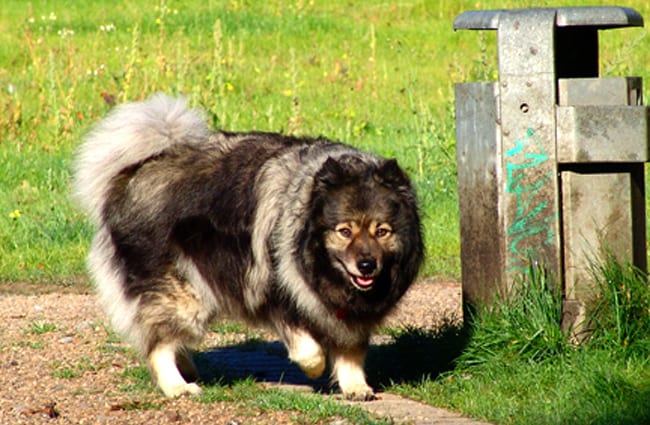

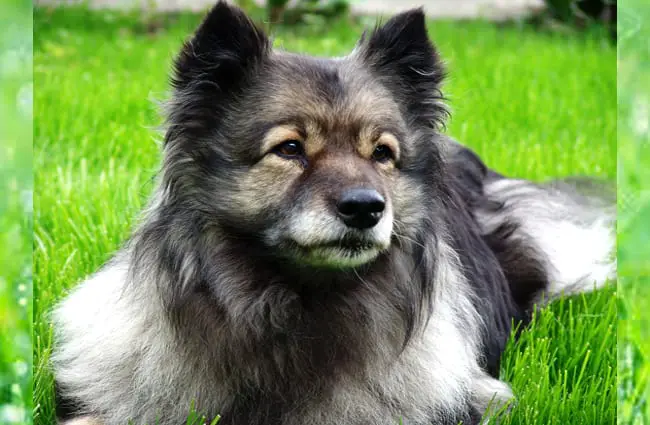
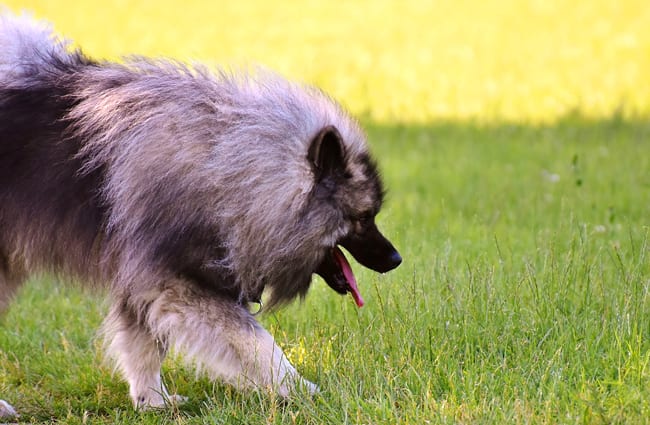
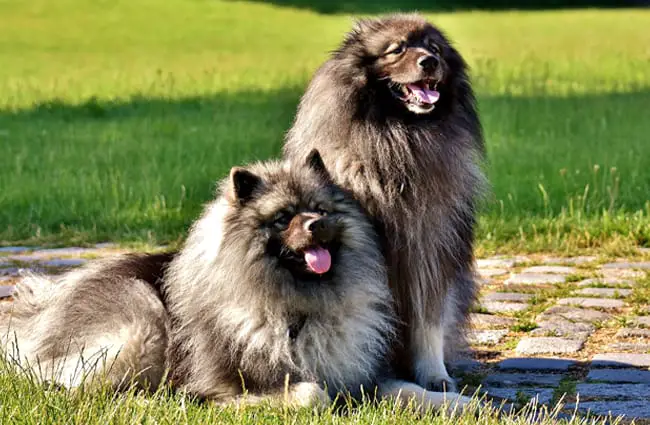



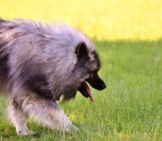














![Red Angus Closeup of a beautiful Red Angus cowPhoto by: U.S. Department of Agriculture [pubic domain]https://creativecommons.org/licenses/by/2.0/](https://animals.net/wp-content/uploads/2020/03/Red-Angus-4-100x75.jpg)

